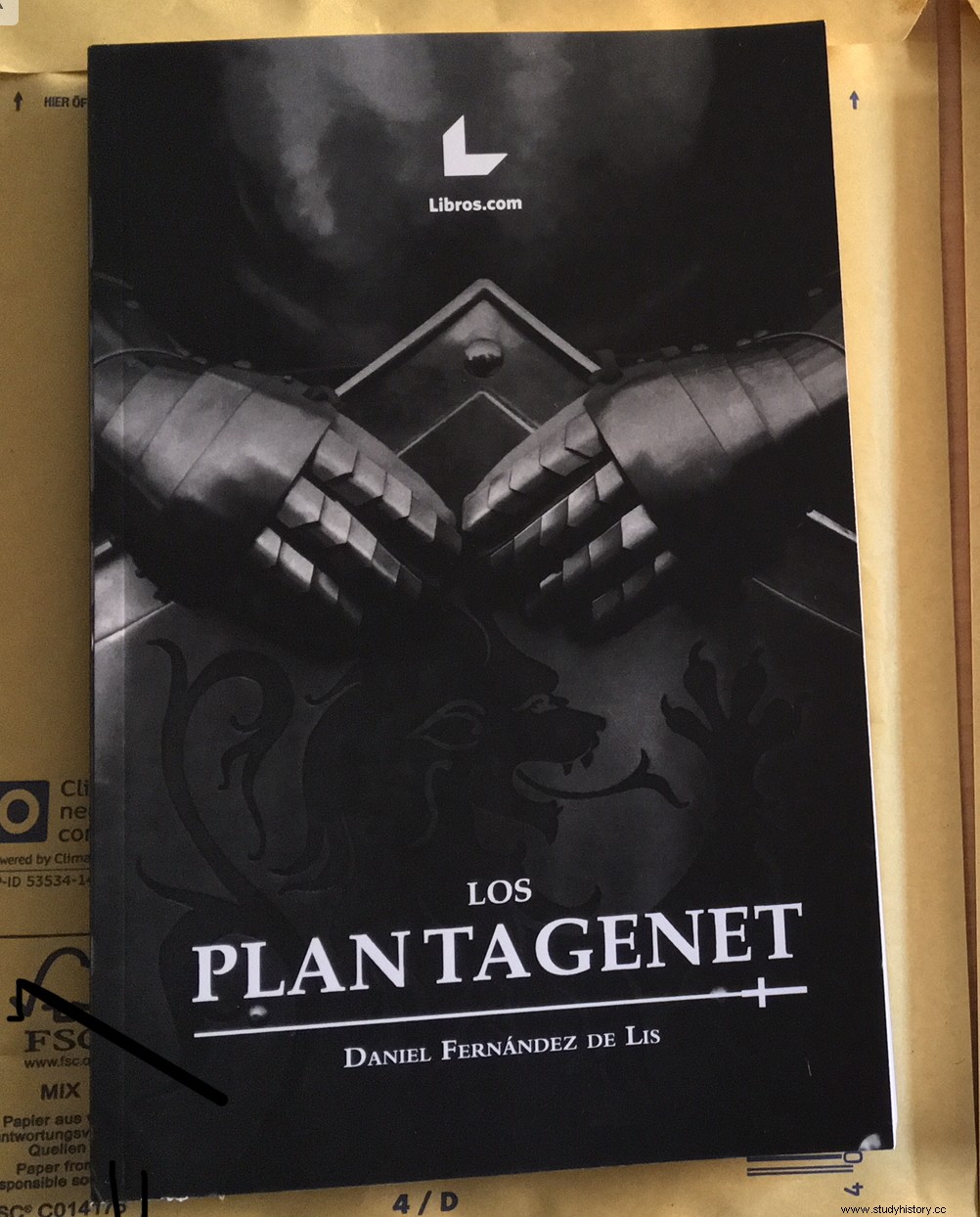 Entry taken from the book The Plantagenets
Entry taken from the book The Plantagenets
What do Saladin, Thomas Becket, Henry Tudor, Joan of Arc, and William Wallace have in common? That all of them faced in one way or another the monarchs of the Plantagenet dynasty, which occupied the English throne for more than three hundred years (from 1154 to 1485).
Monarchs belonged to it and have repeatedly been the subject of attention in literature, film and television. Kings as famous as Henry II and his wife Eleanor of Aquitaine, Richard the Lionheart, Juan sin Tierra, Edward I who had the legend “hammer of the Scots” (the “bad” of Braveheart ) or the protagonists of Shakespeare's plays Henry V and Richard III.
The Plantagenets fought on all the battlefields of the known world, from the Crusades to the civil war for the throne of Castile between Pedro I and Enrique de Trastámara, or from the War From the Hundred Years to the War of the Roses. Indeed, as we said, the Plantagenets were a movie dynasty.
To narrate how they came to occupy the throne of England we have to place ourselves in the year 1135, in which the English king Henry I died. His only son had died years before in a shipwreck and Henry had named his other daughter, the Empress Matilda (so called because of her first marriage to the Holy Roman Emperor Henry V, who had died years before the events we narrate), as heir to the throne. However, a powerful group of English noblemen, led by Esteban (nephew of the deceased king) rebels against Matilda. Years of civil war follow one another between Esteban and Matilde Finally, both contenders reach an agreement:Matilde renounces the throne and allows Esteban to occupy it; In exchange for this, Esteban appoints Matilde's son, Enrique, as heir, who will bear the crown upon Esteban's death.
Henry is the product of Matilda's second marriage, with Godofredo de Anjou. It is said that Godofredo used to wear in his hat a plant known in Latin as planta genista; hence the name of the dynasty, also known as Angevin because of its place of origin.
In 1154 Stephen died and Henry II acceded to the English throne; he is accompanied by his wife, one of the most extraordinary characters of the Middle Ages, Eleanor of Aquitaine. Leonor's story had up to three entries in the blog, but for the purposes that interest us today, suffice it to say that she had married the French king Louis VII for the first time, a marriage that was a failure (among other reasons, the king complained of that Leonor did not give him a male heir) and their union was declared null.
Great was the surprise of the whole world (especially that of the French monarch) when shortly after Eleanor became engaged to Henry of Anjou, to whom she gave eight offspring, five of them males. Adding Eleanor's holdings in Aquitaine to Henry's in Anjou and Normandy, the couple had as much land on the Continent as the King of France himself, not to mention Henry's right to the throne of England.
The reign of Henry II is marked by two great conflicts. The first of them, of a family nature, confronted Enrique with his wife and his rowdy children. The second, of a political nature, pitted him against the personalized Church in the figure of the Archbishop of Canterbury, Tomás Becket.
Regarding the first of these conflicts, the strong personality of both the father and the children (and their mother who supported them) caused continuous disputes and skirmishes between Henry II and his four male children born from the marriage with Leonor and who reached adulthood (Enrique, Godofredo, Ricardo and Juan). Leonor sided with her offspring, which caused Enrique to imprison her and hold her captive for more than fifteen years. The movie "The Lion in Winter" correctly narrates these family brawls.
The second of the great workhorses of the reign of Henry II was related to the limits of power between Church and State. To try to dominate the situation, Henry places an old friend of his, Thomas Becket, whom he believes he can control, in the key position of Archbishop of Canterbury. However, once in charge of him, Thomas becomes a fervent defender of the Church's position and his clashes with the king become stronger and more frequent. After one of these confrontations, Enrique in a fit of rage complains that among all his knights, whom he has loaded with riches, none is able to prevent a lowborn cleric from making fun of him. Four of his barons take his words at face value, ride to Canterbury and murder Thomas Becket. Henry bitterly mourned the death of his former friend and even made a barefoot pilgrimage to his tomb. Becket becomes a martyr for the Church and a few years later is elevated to the category of saint.
One of the daughters of the marriage between Henry II and Eleanor of Aquitaine, named after her mother, became queen of Castile when she married Alfonso VIII. The couple is buried in the Monastery of Las Huelgas, in Burgos, founded by them.
Henry II died in 1189 and was succeeded to the throne by his two surviving sons; first Ricardo Corazón de León and then Juan sin Tierra. Contrary to the popular image transmitted by cinema and literature, John (the evil official of the time) was a much more important monarch for the history of England than his popular and famous brother Richard the Lionheart... but that's another history. Already narrated in the entries that both brothers have on the blog.
